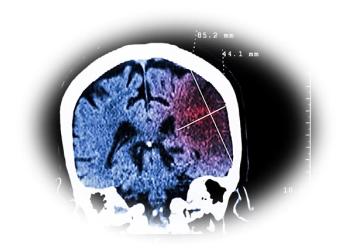
Landscape of Multi-Cancer Early Detection Tests
Experts discuss the evolving landscape of multicancer early detection tests, including those in development and currently available.
Episodes in this series

Transcript
Candace Westgate, DO, MPH, FACOG: So what we know about lab-based tests currently is that they do not have to be FDA approved. They have to be certified and [there are] some other lab-based tests that they can get certifications for, whereas the FDA is for food and drugs. So currently there is no FDA-approved multicancer early detection test. Can you talk a little bit more about the landscape of what tests are currently available, what are still in the research phase, and where this whole realm of multicancer early detection is going? We know we’re just at the beginning of this, and it’s going to explode.
Mylynda Massart, MD, PhD:Yeah, absolutely. So there are many, many tests in development. Many of the technologies have already had excellent science that has been done around the actual science underlying the detection. So using the cell-free DNA or liquid biopsy to look at other types of analytes that are available in our blood to identify cancer—that science is pretty solid at this point. Now what is being tested is really kind of that real-world clinical utility and clinical validity testing. And while that’s happening, things are slowly emerging for the ability to be ordered for patient care. And you’re right, while they do not require FDA approval, they have multiple tests have been given this designation called FDA breakthrough device designation. And many of them are applying for full FDA approval because they recognize that does give some additional support to the technology, something that’s so, so new. However, historically, genetic technology, genomic technology has been more under this lab development test, or LDT policy, and hasn’t required FDA approval. So there’s just 1 [test] currently on the market that’s available as a true liquid biopsy and preventive care and screening for cancer. And that is the gallery test from GRAIL. This is a blood biopsy test that looks at over 50 different cancers with 1 blood draw and also can use that technology, as I mentioned earlier, to predict that cancer signal origin. So not only do you get a yes or no answer for a screen, which is important to understand, this is a screen and not a test. So we can have false negatives and we can have false positives. But once a screen is positive, we’re going to work that up with the diagnostic evaluation. Now, this particular test that’s on the market has a positive predictive value of around 40%, which means if the screen comes back positive, there’s about a 1 in 2 chance that that’s correct, that that patient actually has cancer at that given time. And then the test result will also come back with 1 or 2 top recommended cancer signals of origin that were identified using this technology and that would direct the diagnostic evaluation to go look for this cancer. So that’s the first one. As I mentioned, there are many others that are in development and in current clinical trials, and probably one that many have been watching has been the Exact Sciences multicancer early detection test, which screens for 96 different cancers. And it’s looking at that same technology of methylation patterns of cell-free DNA. But in addition, it looks at a couple of additional analytes, including gene mutations, various different proteins, and aneuploidy, so copy number of chromosomes. So these are all things that are well understood in the biology of cancer as a cell; a normal cell becomes a cancer cell. These changes start occurring as unregulated cell growth starts happening. So all of these are sort of hallmarks for a positive cancer signal and can be used to help to identify if there is a current cancer, again, at that moment in time in a blood draw. This particular test from Exact Sciences does not predict cancer signal of origin and is coupled with a full-body PET-CT scan to identify where that cancer signal origin might be coming from.
Candace Westgate, DO, MPH, FACOG: So I think it’s really important to know there are many tests that are out there and available looking at many different things. And so the associated work-up that would be needed, depending on what test it is that comes to the market, will be very specific to that test.
Mylynda Massart, MD, PhD: Yeah, absolutely.
Candace Westgate, DO, MPH, FACOG:So what we know about lab-based tests currently is that they do not have to be FDA approved. They have to be certified and [there are] some other lab-based tests that they can get certifications for, whereas the FDA is for food and drugs. So currently there is no FDA-approved multicancer early detection test. Can you talk a little bit more about the landscape of what tests are currently available, what are still in the research phase, and where this whole realm of multicancer early detection is going? We know we’re just at the beginning of this, and it’s going to explode.
Mylynda Massart, MD, PhD:Yeah, absolutely. So there are many, many tests in development. Many of the technologies have already had excellent science that has been done around the actual science underlying the detection. So using the cell-free DNA or liquid biopsy to look at other types of analytes that are available in our blood to identify cancer—that science is pretty solid at this point. Now what is being tested is really kind of that real-world clinical utility and clinical validity testing. And while that’s happening, things are slowly emerging for the ability to be ordered for patient care. And you’re right, while they do not require FDA approval, they have multiple tests have been given this designation called FDA breakthrough device designation. And many of them are applying for full FDA approval because they recognize that does give some additional support to the technology, something that’s so, so new. However, historically, genetic technology, genomic technology has been more under this lab development test, or LDT policy, and hasn’t required FDA approval. So there’s just 1 [test] currently on the market that’s available as a true liquid biopsy and preventive care and screening for cancer. And that is the gallery test from GRAIL. This is a blood biopsy test that looks at over 50 different cancers with 1 blood draw and also can use that technology, as I mentioned earlier, to predict that cancer signal origin. So not only do you get a yes or no answer for a screen, which is important to understand, this is a screen and not a test. So we can have false negatives and we can have false positives. But once a screen is positive, we’re going to work that up with the diagnostic evaluation. Now, this particular test that’s on the market has a positive predictive value of around 40%, which means if the screen comes back positive, there’s about a 1 in 2 chance that that’s correct, that that patient actually has cancer at that given time. And then the test result will also come back with 1 or 2 top recommended cancer signals of origin that were identified using this technology and that would direct the diagnostic evaluation to go look for this cancer. So that’s the first one. As I mentioned, there are many others that are in development and in current clinical trials, and probably one that many have been watching has been the Exact Sciences multicancer early detection test, which screens for 96 different cancers. And it’s looking at that same technology of methylation patterns of cell-free DNA. But in addition, it looks at a couple of additional analytes, including gene mutations, various different proteins, and aneuploidy, so copy number of chromosomes. So these are all things that are well understood in the biology of cancer as a cell; a normal cell becomes a cancer cell. These changes start occurring as unregulated cell growth starts happening. So all of these are sort of hallmarks for a positive cancer signal and can be used to help to identify if there is a current cancer, again, at that moment in time in a blood draw. This particular test from Exact Sciences does not predict cancer signal of origin and is coupled with a full-body PET-CT scan to identify where that cancer signal origin might be coming from.
Candace Westgate, DO, MPH, FACOG:So I think it’s really important to know there are many tests that are out there and available looking at many different things. And so the associated work-up that would be needed, depending on what test it is that comes to the market, will be very specific to that test.
Mylynda Massart, MD, PhD:Yeah, absolutely.
Transcript was AI-generated and edited for clarity.
Newsletter
Enhance your clinical practice with the Patient Care newsletter, offering the latest evidence-based guidelines, diagnostic insights, and treatment strategies for primary care physicians.



































































































































































































































































































